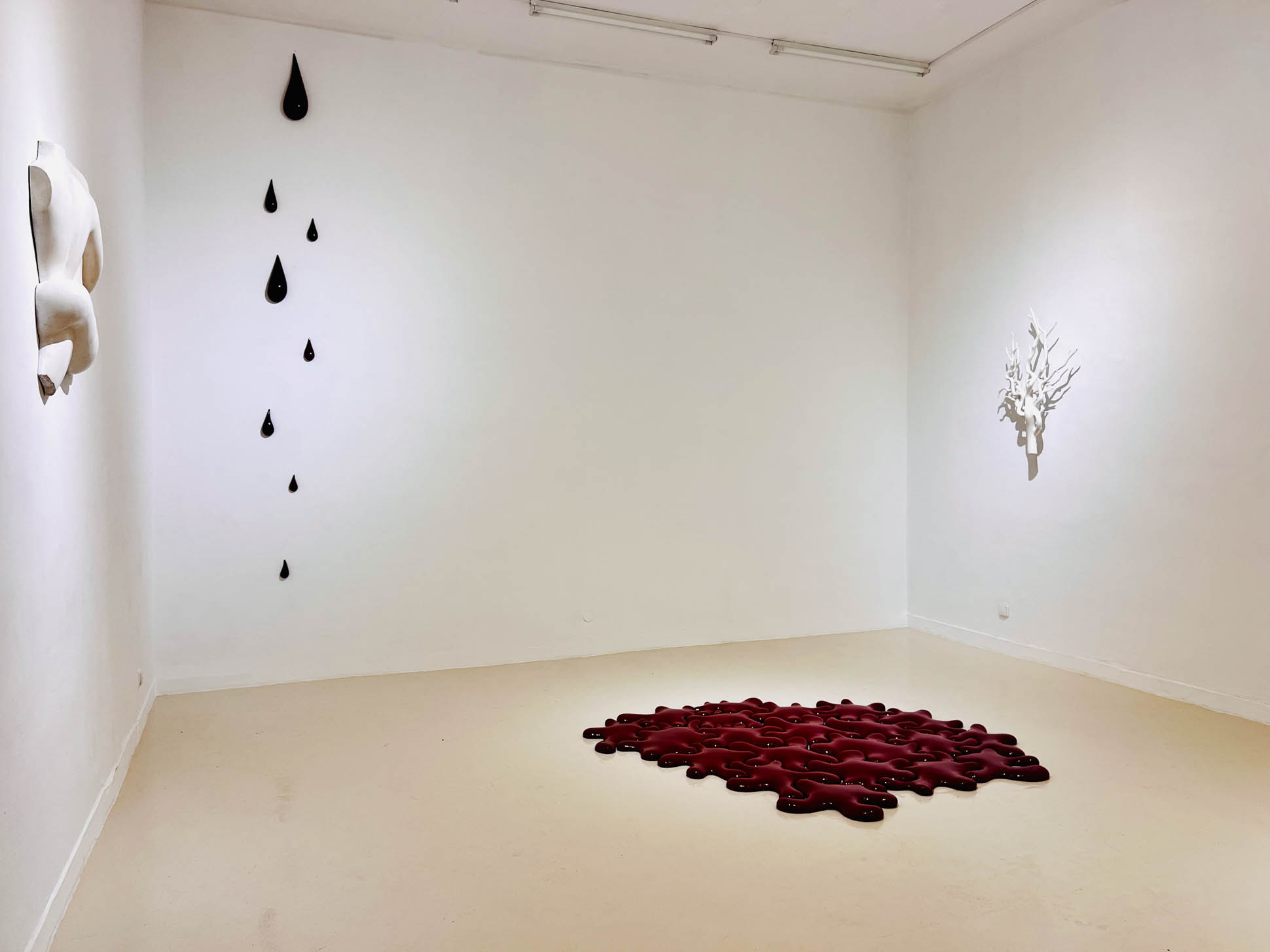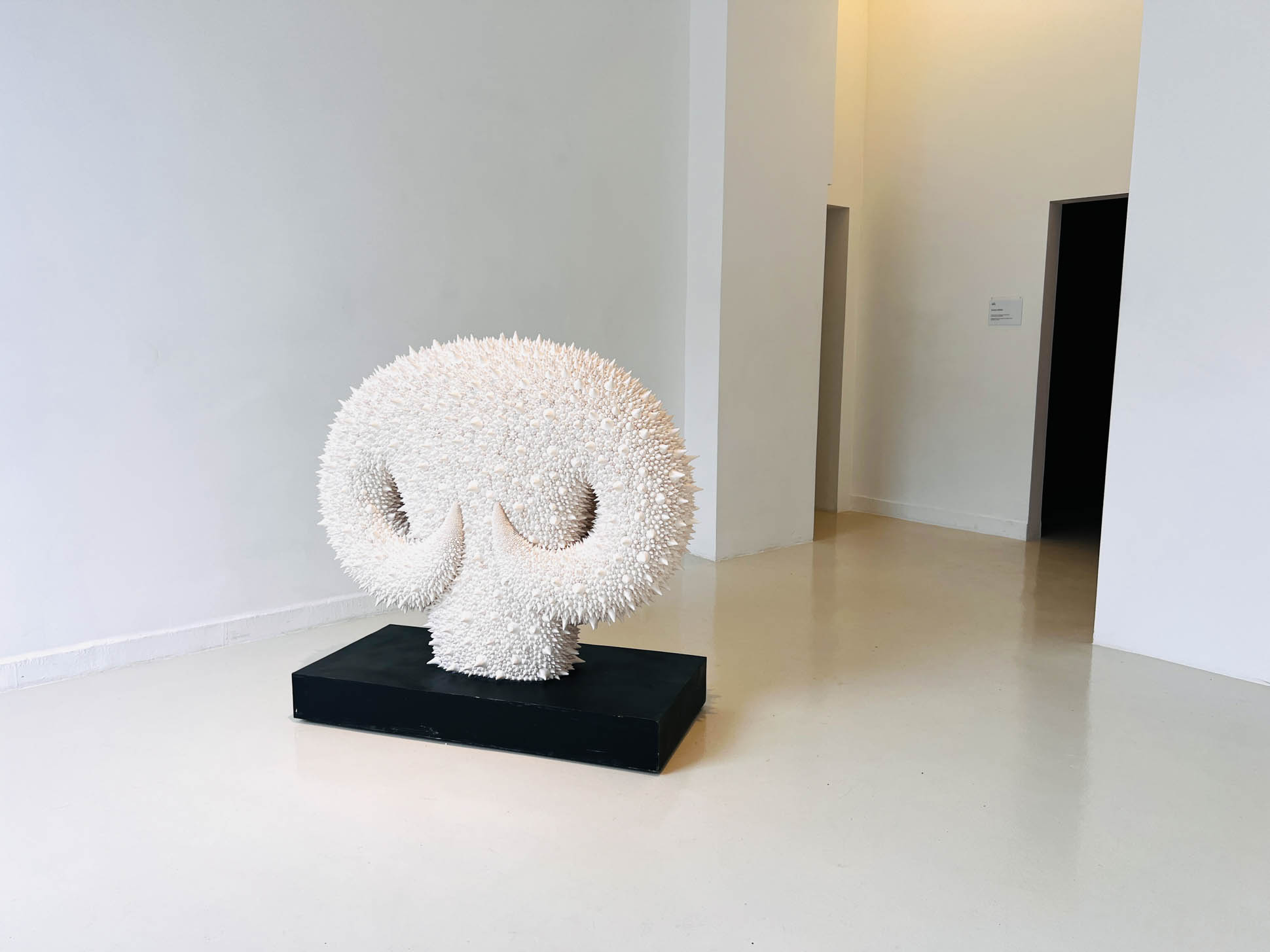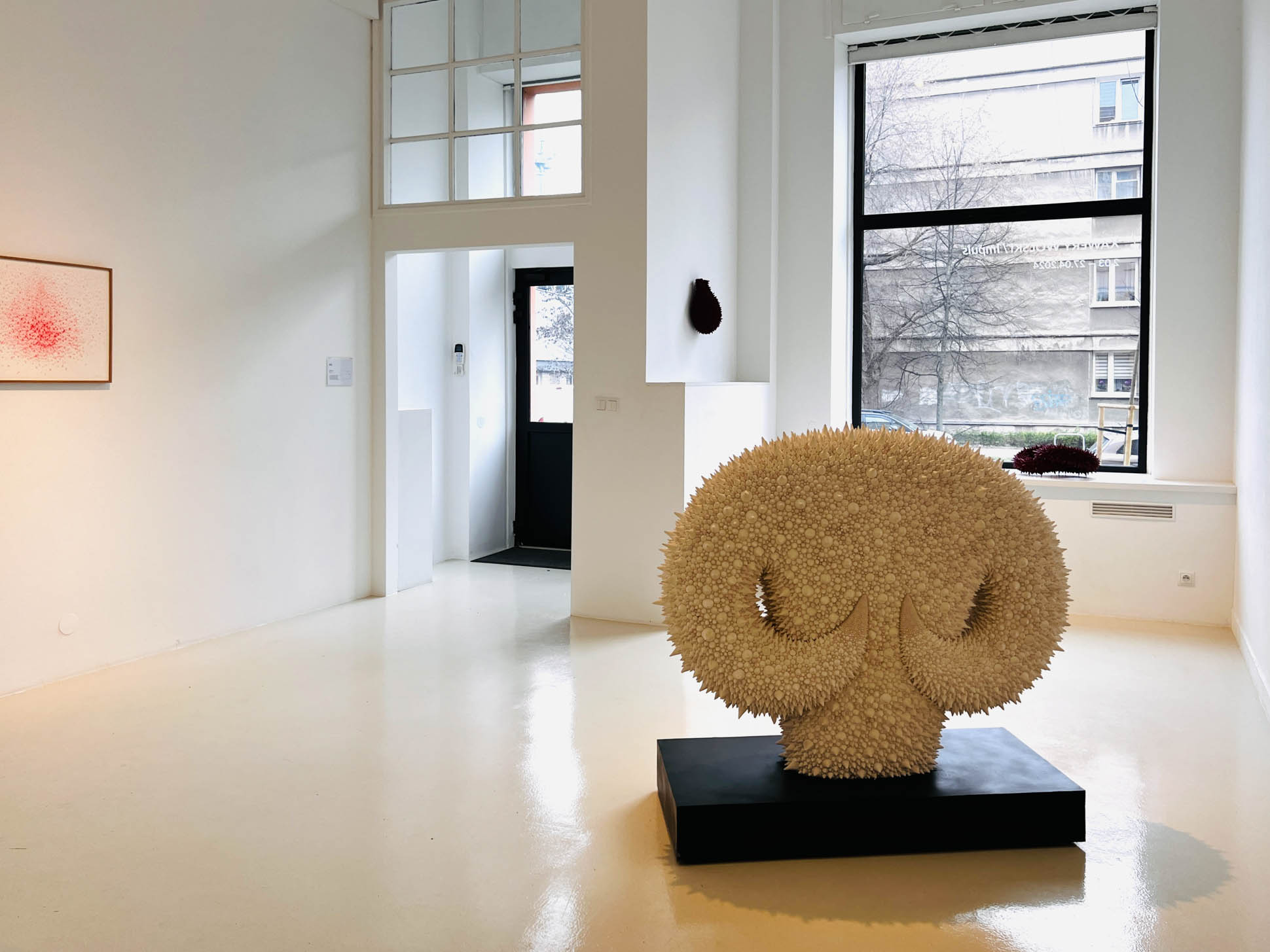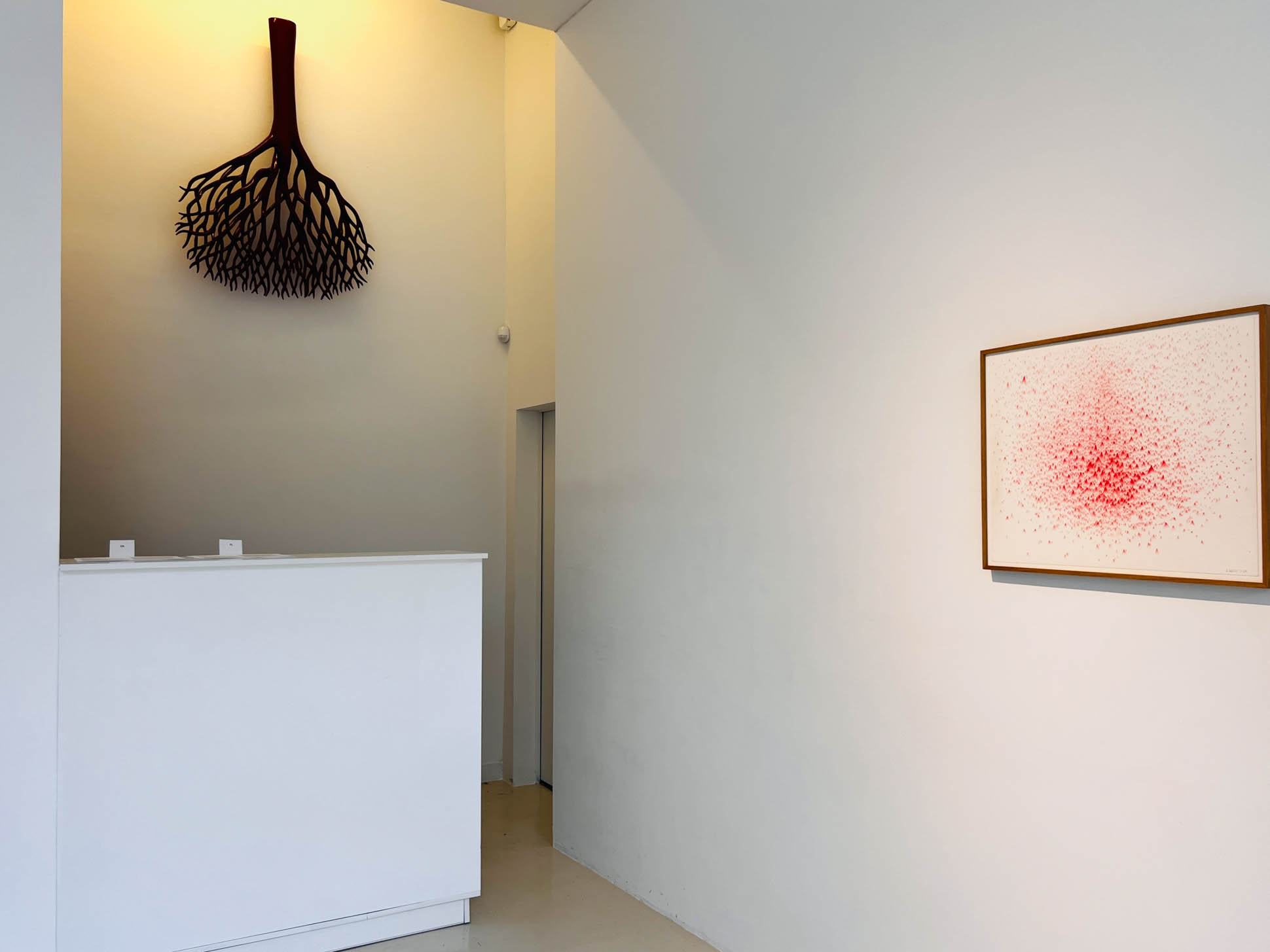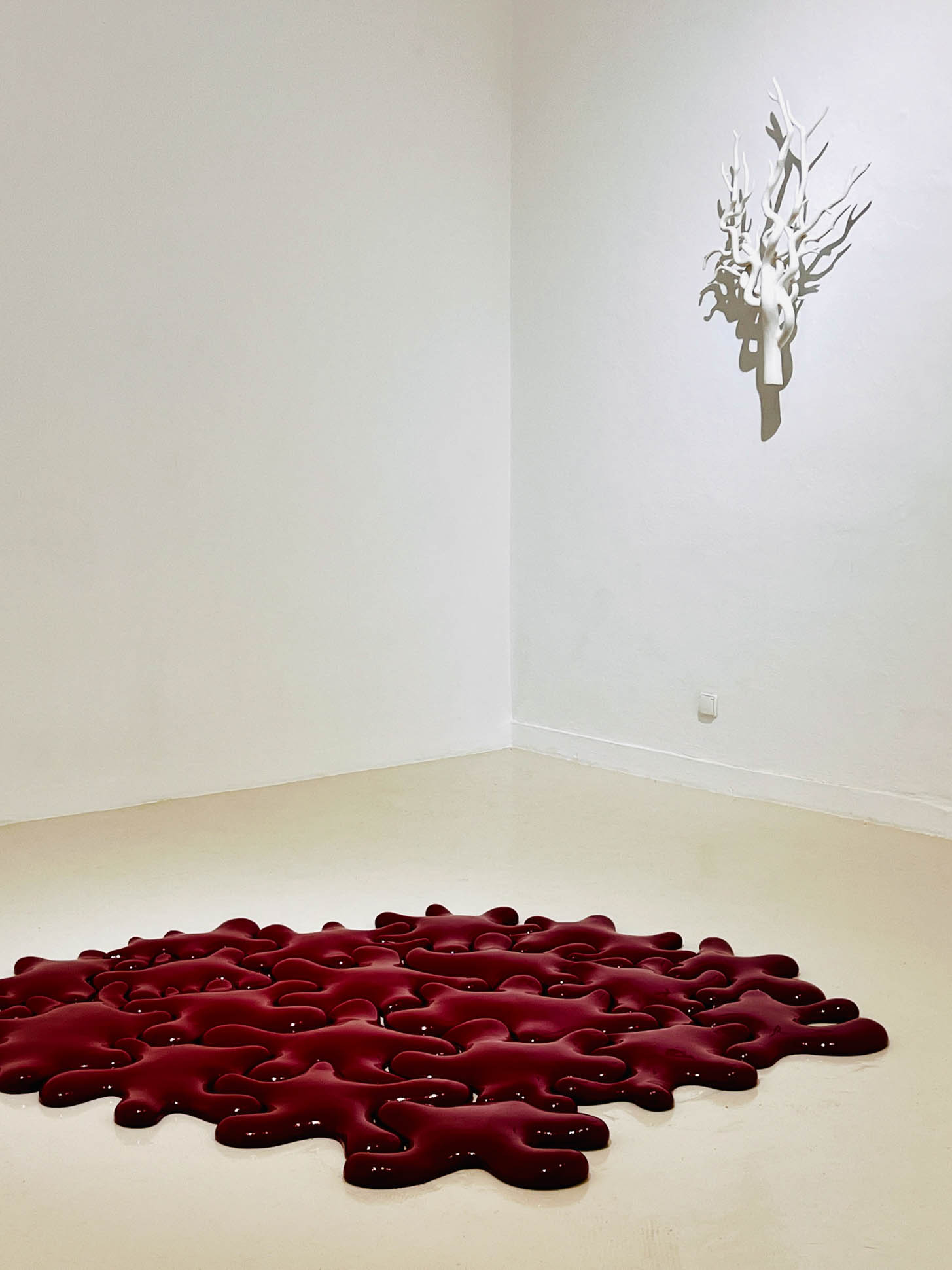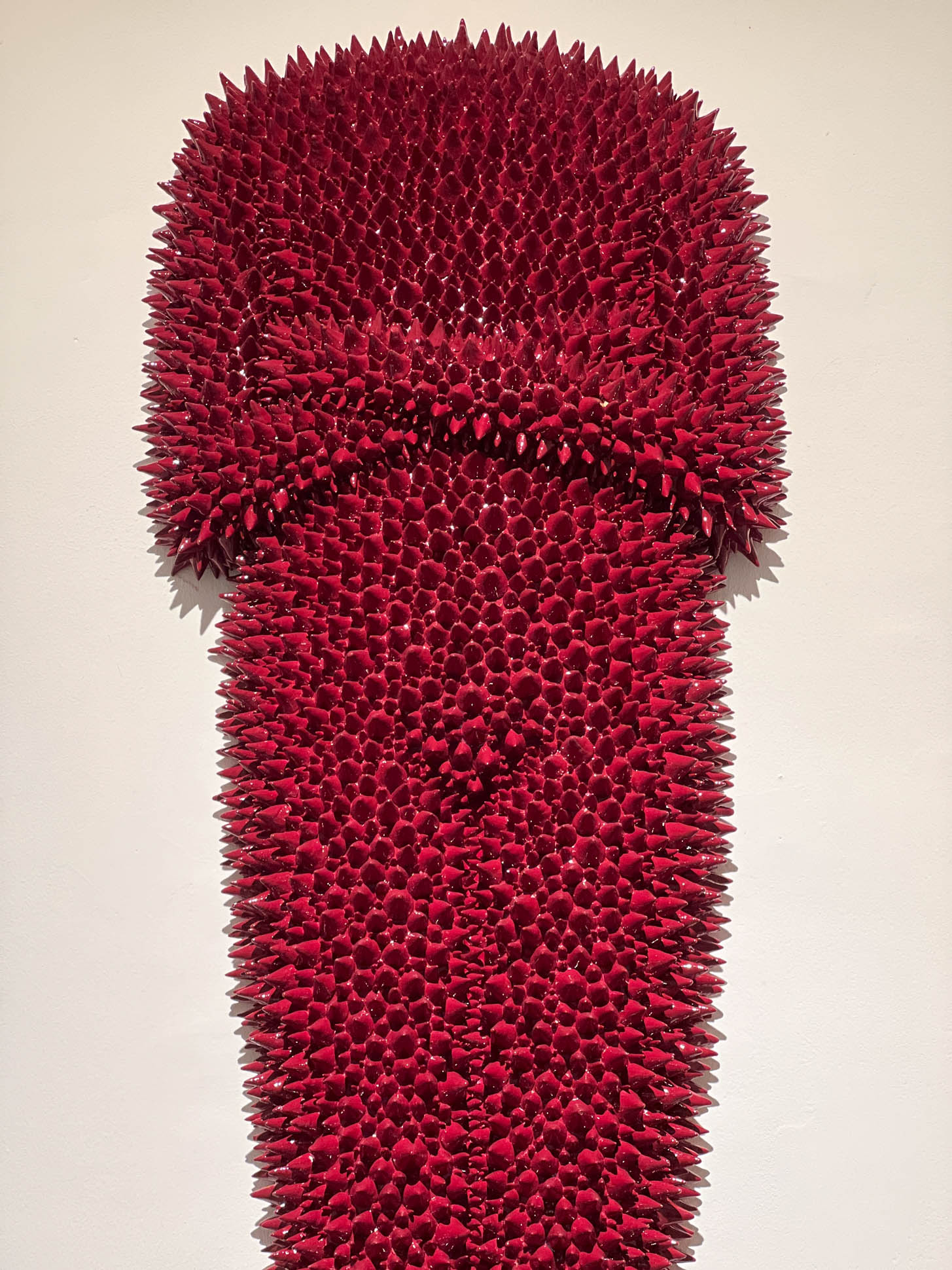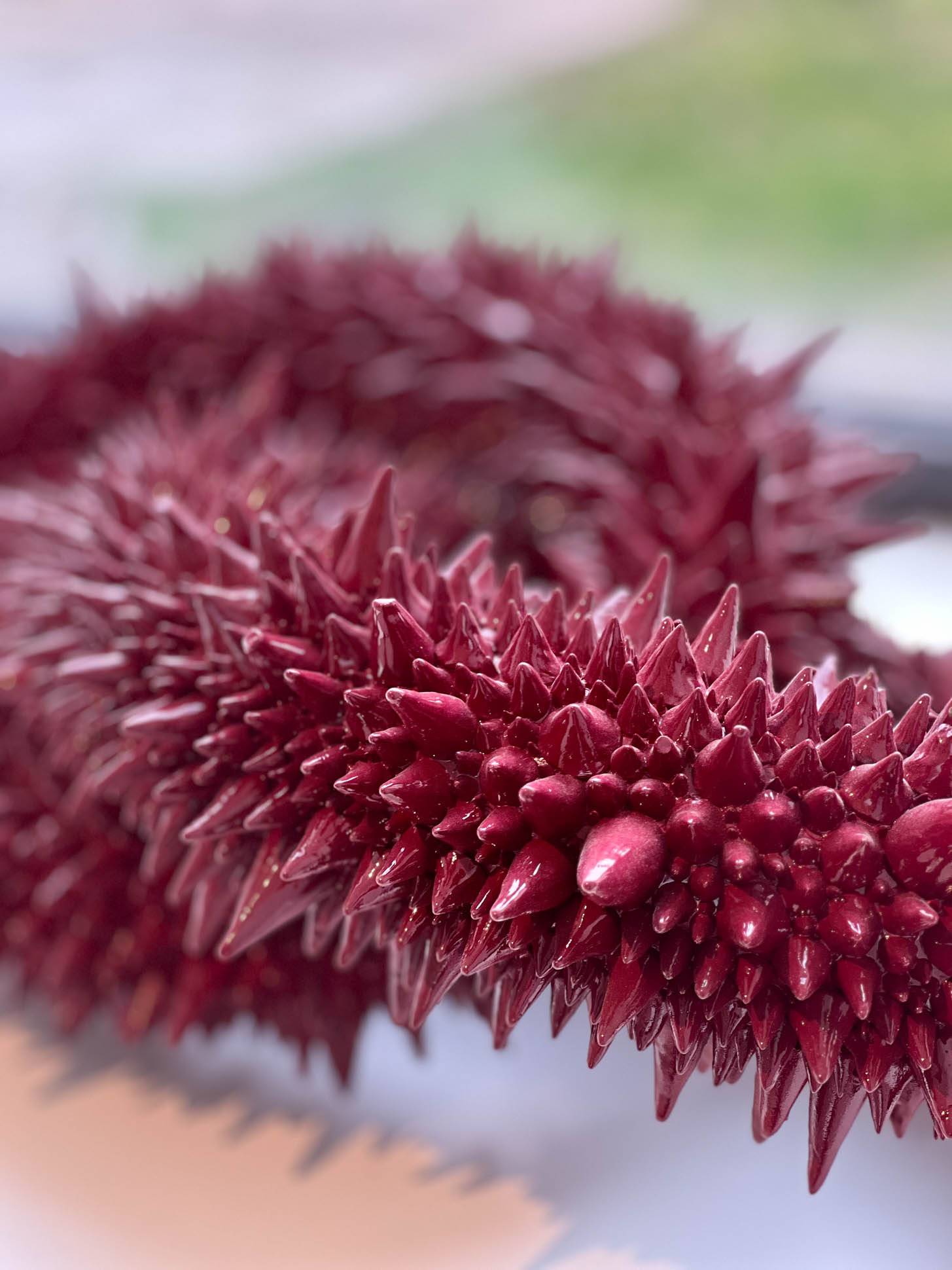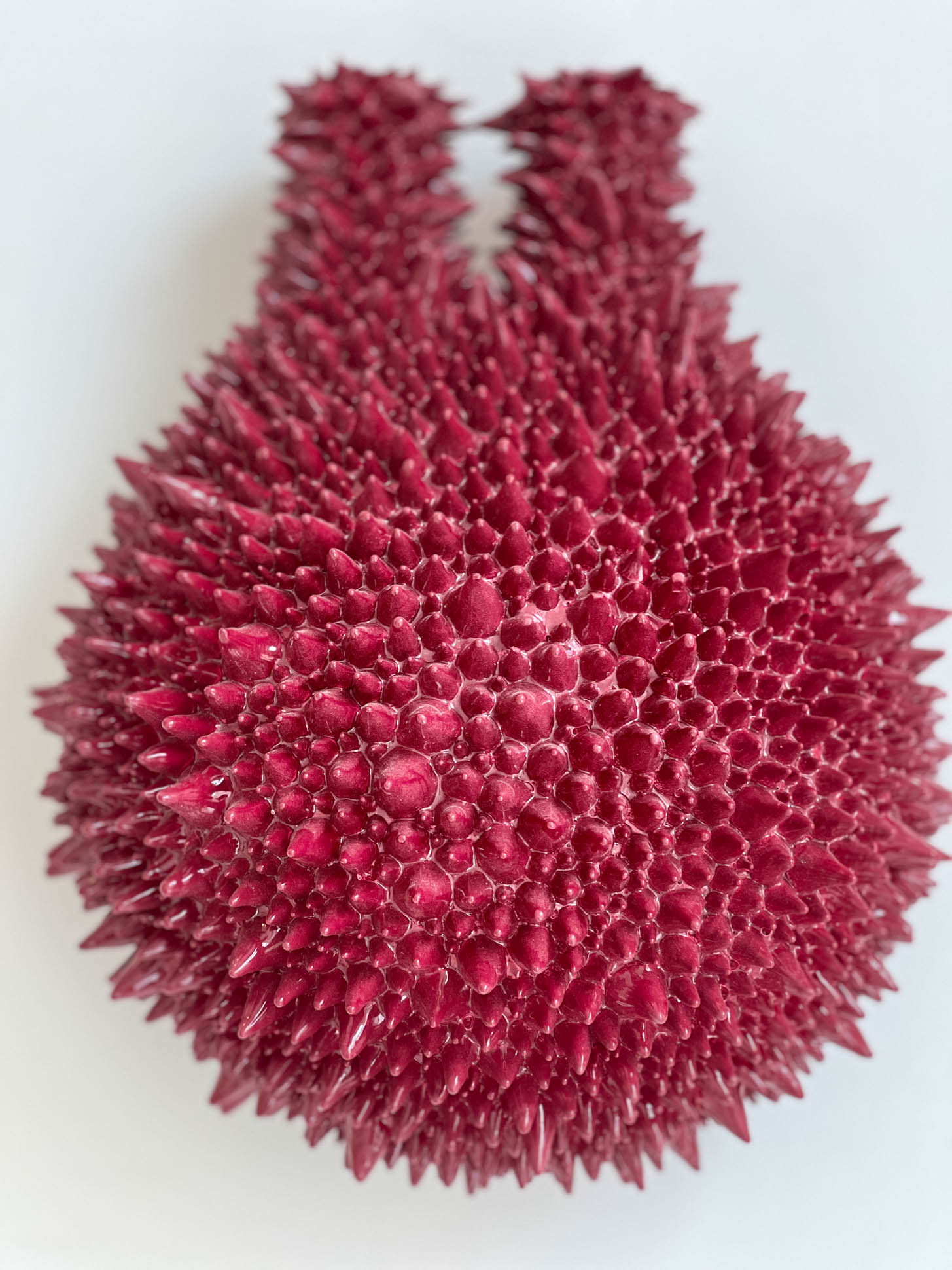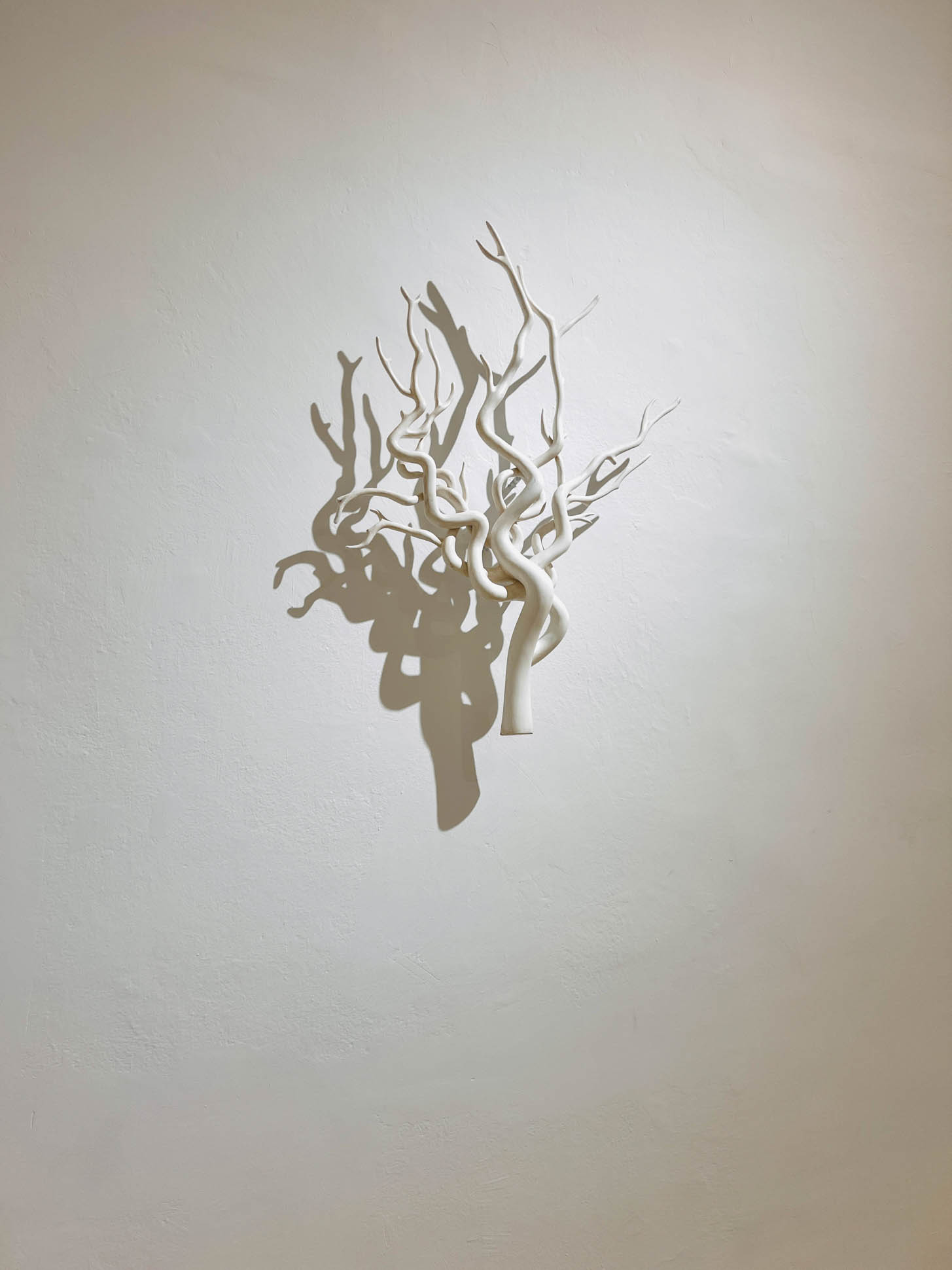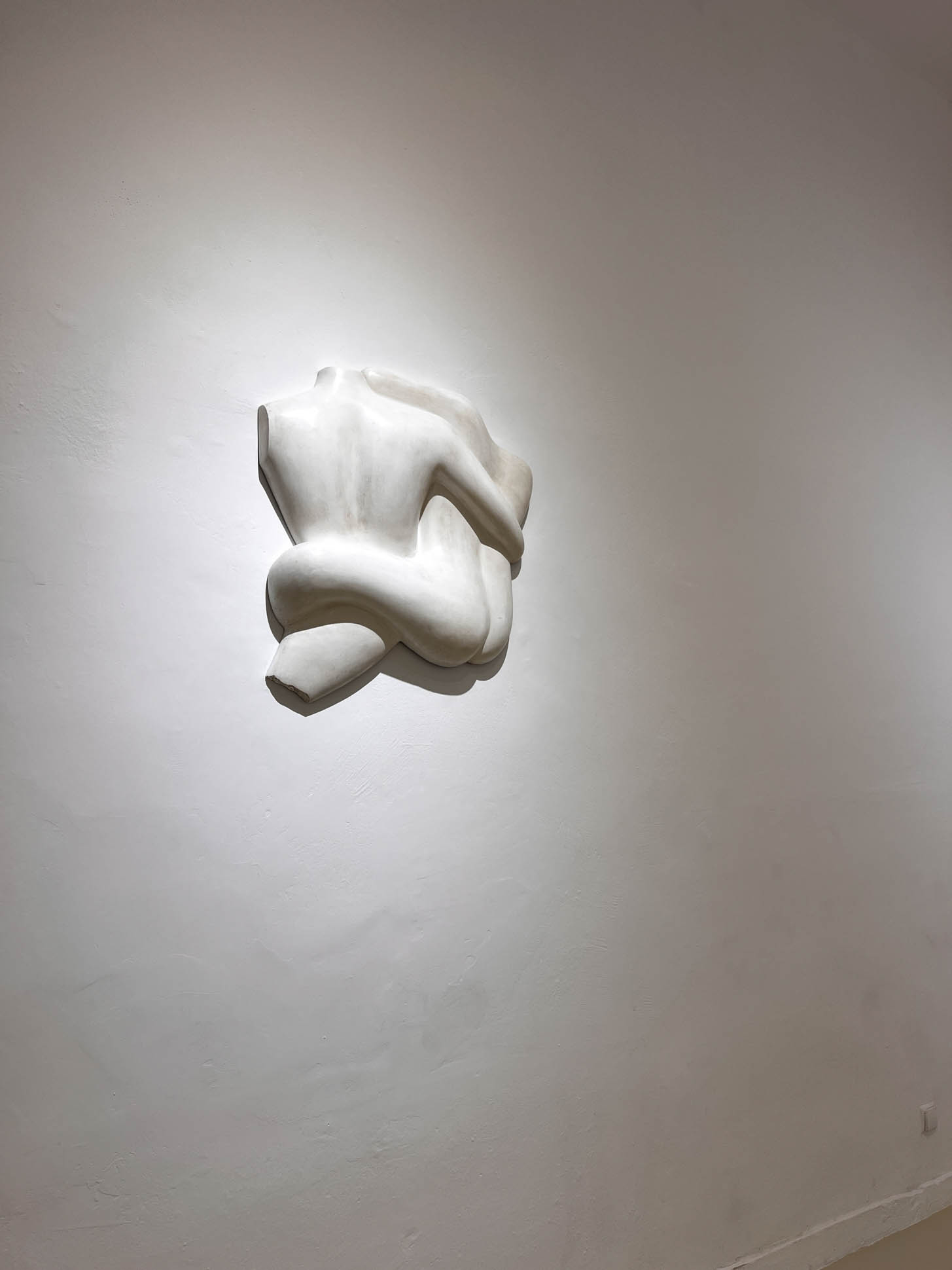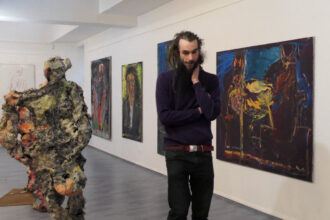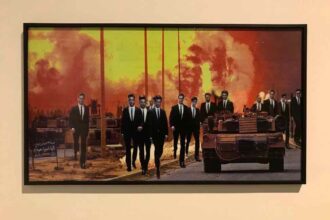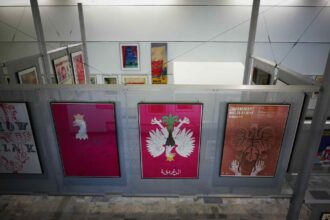Xawery Wolski at Leto Gallery Warsaw
Metamorphosis series. Xawery Wolski began working on the series in 2010. Its most distinguishable property is seen in the cone-like elements in various sizes, which conform to the traditionally defined standard of sculptural forms. This leads to an impression that the sculpture has gone through some sort of mutation.
One notable example is the work exhibited as part of the show Minotaur (2021-22), whose starting point is a sketch of a horned head. This shape was amended by the artist through a gradual application of an innumerable number of cone-like elements. The final effect is that of an evolution into another form; it may also be reminiscent of illness, of hypertrophy, an infection by a foreign body or an infestation of unfamiliar organisms. At the same time, the precision and aesthetic rigor apparent in the piece draws out a rather pleasant response from the viewer, rather than fear or apprehension. Any negative feelings are generally restricted to a subliminal feeling of unease related to the uncertainty about where the transformation is headed, as it appears to have been captured too early.
The Metamorphosis series undertakes a similar approach to form. It digs into the need for transformation, which simultaneously doesn’t appear to have any exact goal. A substantial part of the series is made of white terracotta, a material that has strong implications for the sculptural tradition – both ancient and modern. Back in the 1980s, as soon as he’d graduated from the academy, the artist set out to Carrara, so that he could work directly with the local marble – the mythical material of classical European sculptural practice. He then expanded his practice to white terracotta, which is also associated with meso-American artistic traditions. Xawery Wolski is deeply aware of the semantics and rhetoric inherent in the state of whiteness.
If the paint refers to blood, then the sculpture is the coagulation. This time, the transformation refers above all to the semantics behind the symbols – the conscious and subconscious associations related to the metamorphosis of a shade or material. A bloody body, form, sculpture. A transformation that opens up the scope of metaphor and the sensory experience, which can spread into perversion. The association with blood suggests violence, which itself appears to be negated by the sensory effects of smoothness and shine that tend, rather, to elicit a positive response.
A sort of risk abounds, whose most extreme manifestation would be an attack of hemophobia. The red hue brings out highly intense, albeit opposing reactions: passion, excitement, pleasure, and also anger, aggression, fear. In spite of all this, whether it’s a pleasant or unpleasant association, the intensity of the response is what transforms the sculpture’s “metabolism of change” into the unchangeable (to borrow from Catherine Malabou). He transforms the stagnation of the form into a game of impulses, whose effects cannot be foreseen.

